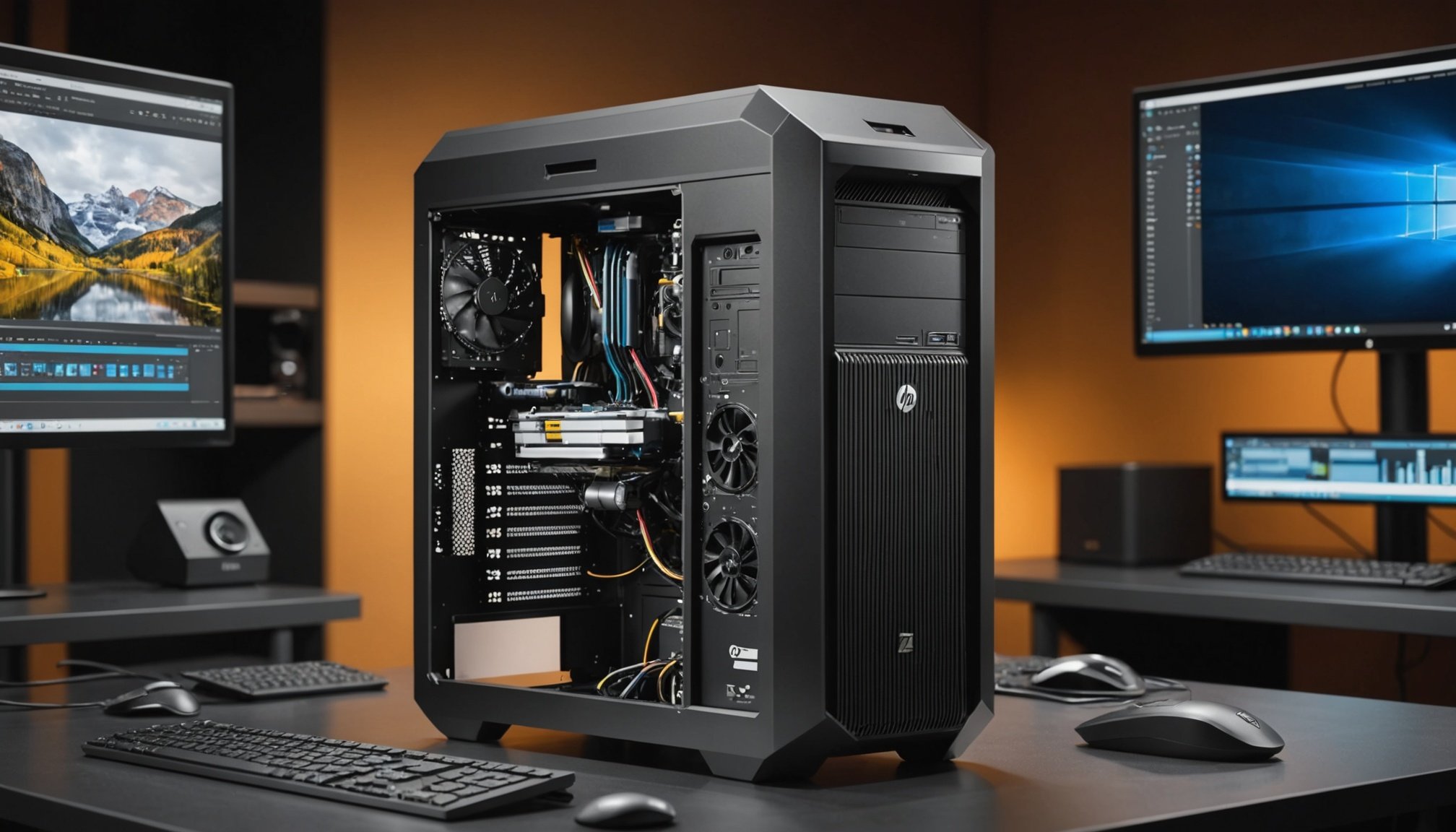Advanced Techniques for 4K Video Editing on HP Z2 Tower G5
When working with high-resolution projects, hardware acceleration can significantly boost your 4K video editing efficiency on the HP Z2 Tower G5. It leverages the processing power of your hardware to speed up tasks such as video rendering, which is crucial for long or complex projects. By enabling hardware acceleration, you offload certain processing functions to your GPU, allowing for smoother playback and quicker export times.
Another vital consideration is efficient file management. For large 4K projects, maintaining an organized file structure is essential. Use fast storage solutions such as SSDs to store your project files, which can drastically reduce load times. Employ hierarchical folder structures to categorize assets, saving you time while searching for specific files during the editing process.
Also to discover : Supercharge Your Lenovo ThinkPad P52 for Machine Learning: Ultimate Training Efficiency Configuration Guide
When it comes to optimized video formats, selecting the right codec can enhance your editing experience. Formats like ProRes and DNxHD/HR are optimized for editing, offering a good balance between file size and video quality. Converting your footage into one of these intermediary formats can facilitate smoother editing by reducing the processing load on your system while maintaining image fidelity. Employing these advanced techniques allows for a more streamlined and efficient workflow, maximizing the performance of the HP Z2 Tower G5 in handling demanding 4K video editing tasks.
Software Recommendations for Optimal Performance
Choosing the best video editing software for 4K projects is crucial for utilising the full potential of the HP Z2 Tower G5. Leading software options for 4K editing include Adobe Premiere Pro, Final Cut Pro, and DaVinci Resolve. These platforms are renowned for their comprehensive set of tools and ability to handle high-resolution footage efficiently. When considering the ideal software, evaluate their rendering capabilities, interface flexibility, and support for third-party plugins.
Have you seen this : Mastering your home office security: top strategies for safeguarding your network with the linksys mx5 velop ax whole home wifi 6 system
Top Editing Software Options
Adobe Premiere Pro stands out with its robust features and adaptability across various workflows. It supports software optimization through numerous settings and third-party integrations. Consider adjusting the software’s memory allocation and playback quality to enhance editing performance.
Customizing Software Settings
Software optimization is key to maximizing performance. Customising video editing software can drastically improve workflow efficiency. Prioritize adjusting settings such as playback resolution, GPU acceleration, and pre-rendering options. These adjustments help in reducing lag, enhancing rendering times, and enabling smooth playback.
Third-party Plugins and Add-ons
To further augment functionality, explore third-party plugins compatible with these platforms. Plugins such as Red Giant Universe and Boris FX empower editors with additional creative effects and transition options, fully utilising the HP Z2’s processing prowess. These enhancements not only beautify projects but also streamline workflow efficiency, providing editors with a competitive edge in producing high-quality content.
Hardware Optimization for Enhanced Editing Capabilities
For those looking to boost their 4K video editing prowess, focusing on HP Z2 hardware upgrades is crucial. Key elements include RAM and storage configurations, which play pivotal roles in managing high-resolution footage. Investing in ample RAM ensures that the workstation can handle multiple editing tasks simultaneously without bottlenecks. Consider upgrading your system to at least 32GB of RAM for optimal results in 4K workflows.
The choice of a graphics card is another critical factor. A powerful GPU significantly enhances HP Z2 performance, rendering graphics and effects smoothly. Look for cards like NVIDIA’s RTX series that offer dedicated processing power tailored for intense video editing tasks.
During extensive editing sessions, maintaining the machine’s performance becomes a priority. Implementing effective cooling solutions, such as enhanced air or liquid cooling systems, can prevent overheating, which otherwise could lead to throttling and reduced efficiency.
By focusing on these hardware optimization strategies, users can maximize their system’s efficiency and unlock the full potential of their HP Z2 Tower G5, ensuring seamless handling of demanding 4K editing projects. Maximising workstation performance not only reduces downtime but also provides a stress-free editing experience.
Best Practices for Efficient Workflow
To achieve a streamlined workflow optimization strategy for 4K video editing, it’s essential to focus on organised project management and efficient tool utilization.
Organizing Your Project Files
Adopting a systematic approach to file organization helps manage complex projects effectively. Start by creating a hierarchical folder structure that categorizes assets by type, such as video clips, audio files, and graphics. This structure not only saves time but also enhances productivity. Additionally, using descriptive file names and tagging can significantly ease the search process for specific files.
Utilizing Keyboard Shortcuts
Keyboard shortcuts are indispensable for speeding up the editing process. Familiarise yourself with common shortcuts within your editing software, such as cutting, copying, and pasting clips. This knowledge enables rapid navigation and execution of frequent tasks, allowing you to focus more on creativity rather than operations.
Establishing a Regular Backup Routine
Instituting a regular backup routine is crucial in preventing data loss, which can be catastrophic for large projects. Utilise automated backup solutions and ensure your files are stored both locally and in cloud-based systems. This dual strategy provides added security, ensuring your work is safeguarded against system failures or accidental deletions. By incorporating these practices, you enhance your editing efficiency and preserve valuable project assets.
Real-world Examples of Performance Improvement
In the realm of performance benchmarking, significant enhancements have been observed through real-world applications of advanced 4K video editing techniques on the HP Z2 Tower G5. Case studies in video editing provide concrete examples of how these strategies impact workflow efficiency and output quality.
Analysis of Before-and-After Editing Scenarios
Users frequently report notable differences in performance measured pre- and post-implementation of HP Z2 performance enhancement techniques. For instance, implementing hardware acceleration for video rendering dramatically reduces time spent during export in intensive 4K projects. Incorporating efficient file management and optimized video formats further facilitates smoother, faster edits by reducing processing overhead.
Testimonials from Users on HP Z2 Enhancements
Users have shared testimonials highlighting the transformative effects of optimizing workstation performance. Editors transitioning from slower systems to the HP Z2 have noticed increased responsiveness and less lag time, which translates to higher productivity and a more enjoyable editing experience.
Metrics and Benchmarks to Measure Improvement Effectiveness
Specific metrics indicate the effectiveness of performance enhancement strategies. Metrics such as reduced rendering times, improved playback smoothness, and decreased load times substantiate the value these techniques provide. By benchmarking these improvements, users can see tangible evidence of how these methods amplify the potential of the HP Z2 Tower G5 in real-world scenarios, aligning expectations with actual performance gains.










